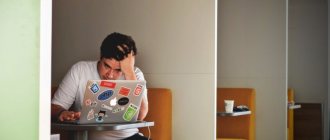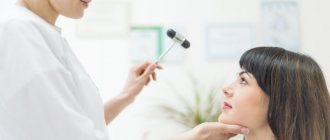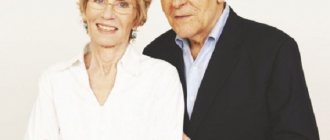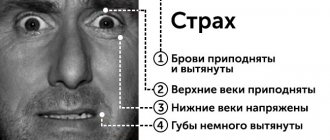The Children's Medical Center for Neurology and Pediatrics offers you a service - an electroencephalogram of a child!
Our specialists have many years of experience and excellent reviews!
- EEG procedure;
- How to prepare for an EEG;
- Types of EEG;
- Indications for EEG;
- Contraindications;
- Results (transcript);
- Our advantages.
Electroencephalography (EEG)
– one of the most widely used methods for diagnosing and studying the brain used in modern neurology and pediatrics. EEG allows you to monitor the child’s brain activity, assess functional changes in the cerebral cortex, confirm or refute the presence of lesions and disorders of the central nervous system.
In some cases, an electroencephalogram is indicated for the child to monitor the treatment, its effectiveness and appropriateness.
EEG procedure for a child
Electroencephalography of a child is a harmless procedure, without introducing drugs into the baby’s body, it will not cause painful sensations.
It is quite easily tolerated by children of all ages. Diagnostics are carried out in a room without extraneous sounds or distracting noises. The child usually either sits or lies on a couch, and a special cap with electrodes is placed on his head, which record brain activity in different areas. Because It is difficult for children to sit for a long time without moving, so in order to maintain a calm state, they try to distract them with toys. You can also bring toys with you - this will have a positive effect on the emotional background of the baby.
The specialist accompanies the main study with additional tests: he asks the child to blink, breathe frequently and forcefully (hyperventilation), blinks a flashlight near the child’s eyes (photostimulation) - these tests are necessary for additional stimulation of the brain and provocation of manifestations of a pathological nature.
Electroencephalogram for autism: reviews
| Positive | Negative |
| In order not to injure the child, we asked for a CT and MRI of the brain, albeit with anesthesia, but quickly, accurately and without any problems. The only negative is that these studies are much more expensive than electroencephalography. If it were possible to reach an agreement with my son, we would go through with what was prescribed, but... alas. (Nina) | For us, all these suction cups on our heads are a total nightmare; our daughter won’t let us attach them to anything, and we also have to sit motionless for a long time. A neurologist prescribed an EEG for us, we went to a psychiatrist to find out how to cope with fear, and he told us that all these studies for autism are completely useless, since autism is diagnosed solely by behavioral indicators. Now I don’t even know what to do. (Anya) |
| We had an electroencephalogram performed at the age of 1.5 years. We were lucky that we slept soundly, so we drove around the city for an hour in a car to lull us to sleep, then they carefully carried us into the office, and we did everything. As the neurologist explained to us, it is necessary to exclude factors that could cause symptoms similar to autism. The diagnosis was confirmed, appropriate treatment was prescribed, which, by the way, is already showing positive results. (Sofia) | We are categorically against such torture for autistic children! This is incredibly stressful for them. Especially when they are wrapped in a towel or diaper and held by several doctors - it’s just darkness! (Taya) |
| We were prescribed this test at the age of 8, and we could negotiate with our son and keep him occupied for half an hour. So diagnosis was not a problem for us. As for expediency, I think everything that concerns the head needs to be fully examined in order to understand exactly what is happening to your baby. (Yana) | |
| MRI cannot show the neural patency of the brain, therefore, EEG is the only option to look at how impulses move through the brain and what abnormalities exist. We were tested in front of a monitor with bright pictures and cartoons. We can “get stuck” like this for hours, while the brain was in an active state, and the picture was painted in full. | |
| A good study, but while we went through it, we suffered, as a result, our son was given some kind of injection, which completely slowed him down and turned him into a “vegetable” - to say that I was scared is to say nothing. But, thank God, after 30 minutes the son began to behave as usual, and we passed the diagnosis. The diagnosis was confirmed as “Autism due to damage to the occipital part of the brain.” (Rita) |
How to prepare for a child's EEG
Due to the age of young patients, they may require special preparation for the pediatric EEG procedure in Moscow. If the child is newborn or young, then most likely the examination will be carried out in his sleep. But it’s worth preparing the older kids! It is advisable to tell your child about the upcoming “adventures” in advance at home, in a confidential conversation. Describe in detail how and why EEG is done for children, what are the features of the upcoming procedure. You can playfully talk about the “magic cap” that you have to put on to become stronger and healthier.
Psychological preparation, parental support and positive motivation are extremely important for a child. Because Finding themselves in an unknown environment, young children sometimes get scared, cry and flatly refuse to put on a hat with electrodes; under such conditions, it is very difficult to get a high-quality EEG for a child. The procedure must be carried out calmly, in complete silence and with eyes closed, and if the baby is in a stressful state, this is extremely difficult to achieve. Therefore, in such cases, we cannot do without the help of parents!
On the appointed day, it is better to come to the clinic with clean hair, without hairpins, bows, etc., for girls it is better to let their hair down. It’s good if the child is not tired and not hungry.
Why is electroencephalography needed? Complete patient guide
Frequent awakenings at night, insomnia, enuresis, the need to detect epilepsy - these are just some of the pathologies that electroencephalography will help in diagnosing.
The neurologist at the Expert Kursk Clinic, Olesya Olegovna Bratchikova, told us about her.
— Olesya Olegovna, what is electroencephalography and how often is this research method prescribed?
Electroencephalography is a non-invasive method for studying brain function by recording its bioelectrical activity. “Non-invasive” means that there are no punctures, incisions, insertion of instruments into body cavities and organs, etc.
It is used everywhere, all over the world. It is widely used to diagnose and monitor the effectiveness of treatment for various conditions. Among them: loss of consciousness, differentiation of epileptic syndromes, various neurological conditions.
Why is MRI performed for epilepsy? Radiologist at MRI Expert Sochi, Zarema Bardudinovna Tseeva, tells
— What is the difference between daytime and nighttime EEG?
Daytime (otherwise known as routine) electroencephalography is performed during the daytime. Its duration does not exceed 20 minutes. Used to identify obvious disorders - for example, to diagnose epileptic syndrome.
It is used for medical examinations (screening studies), and for the delimitation of paroxysmal (accompanied by certain attacks) conditions. Daytime EEG provides no more than 30% of all possible information.
You can sign up for electroencephalography in your city here
Please note: the service is not available in all cities
Night EEG is the “gold standard” of this examination. It is used for a deep search for a problem: separating epileptic syndrome from non-epileptic syndrome, sleep disorders (walking and talking in sleep, periodic short-term pauses in breathing during sleep - for example, with snoring, etc.), enuresis, etc.
— What are the indications for electroencephalography?
An EEG can detect signs of epilepsy. This is her main indication. In this case, diagnosis is prescribed when epilepsy is suspected for the first time, when the treatment regimen is changed and its control.
Read material on the topic: Epilepsy: symptoms, causes, diagnosis and treatment
Electroencephalography is prescribed for enuresis; paroxysmal states; neuroses, anxiety, irritability; hyperactivity and learning disorders in children; delayed mental development, speech, stuttering; autism; frequent awakenings and excessive motor activity during sleep; episodes of walking and talking in a dream, etc.
— At what age is EEG monitoring performed for children?
Starting from 4 weeks.
— Are the indications for daytime and nighttime electroencephalography different or the same?
For a medical examination/screening of a healthy person (without complaints, burdened anamnesis), a daylong study is sufficient. If a person has a history of, for example, an episode of epilepsy, then an overnight study is necessary.
— In what cases does a patient need to undergo both daytime and nighttime electroencephalography?
In the presence of paroxysmal conditions, suspected epilepsy. Suppose a person had a history of an epileptic seizure, or the doctor himself observed it. In this case, a day examination is carried out. If epileptic activity is not detected during the daytime study, a night study must also be prescribed.
— Is it necessary to undergo EEG monitoring to obtain a certificate from the traffic police?
Yes, but not everyone. Since June 2015, according to the order of the Ministry of Health of the Russian Federation No. 344n, an EEG must be performed on any road user applying for a driving license of categories C, D, E. An EEG for drivers of other categories is performed according to indications determined by a neurologist at an appointment.
— How is electroencephalography performed? How long does diagnosis take?
A special cap with electrodes is placed on the subject’s head. A special gel is applied to the scalp at the point of contact with the electrode (for better contact and conductivity of the recorded impulses). Signals from the brain are transmitted through electrodes to a device called an electroencephalograph. It amplifies them and transfers them to a computer for further processing.
As a result, a special “curve” is formed - an electroencephalogram. Based on it, a conclusion is made about the state of the functional activity of the brain.
The daytime session lasts no more than 20 minutes. The study takes place in the so-called state of “relaxed wakefulness”. The man is relaxed, lying with his eyes closed, but not sleeping.
What are the reasons for insomnia? Olga Ivanovna Kuyantseva, a neurologist at Clinic Expert Voronezh, talks about the treatment of insomnia.
During diagnosis, functional tests are carried out to change the functional activity of the brain. The doctor asks the patient to close and open his eyes and breathe actively (3-5 minutes). Photostimulation is also performed: the subject looks at light flashes.
Night research is best done at home. It starts between 20 and 21 pm. Technical nuances are the same as during a daytime examination.
Two complete sleep cycles are recorded, which is approximately 2-3 hours after falling asleep.
— How to properly prepare for an electroencephalogram?
No special preparation is required for an EEG of the brain. The head must be clean; styling products must not be used when drying. On the eve of the study, avoid stress, overwork, and maintain a measured regimen. It is necessary to refrain from taking nervous system stimulants, strong tea, coffee, and alcohol.
Noisy games, watching TV, cartoons, working or playing on the computer are also undesirable for a child.
The presence of metal objects and jewelry on the body during diagnosis is not allowed.
In some cases, when conducting a sleep EEG to establish or exclude a diagnosis of epilepsy, as well as for the differential diagnosis of paroxysms, so-called sleep deprivation is recommended to the patient in preparation for the study. This means that on the eve of the procedure, the patient reduces the duration of night sleep, wakes up early - 3-4 hours earlier than his usual awakening time.
— Olesya Olegovna, how often can you undergo electroencephalography? Is this diagnostic method safe?
EEG is completely safe. You can undergo EEG monitoring as often as necessary for the doctor to make a diagnosis or monitor the patient’s condition.
— Does EEG have any limitations or contraindications?
No.
— In order to undergo an EEG in your clinic, do you need a doctor’s referral?
If a person undergoes a medical examination or is examined on his own initiative, in principle he can undergo the diagnosis independently, without a referral. It is enough to have an identity document.
If we are purposefully looking for some kind of pathology, determining the type of paroxysms, etc., then in this case it is advisable to have a doctor’s referral. From it we can understand the purpose of the survey, i.e. what the doctor needs.
Other questions:
Educational program on medical professions. When to contact a neurologist?
Holter (24-hour) ECG monitoring – complete instructions for the patient
Tension headache: causes, symptoms, diagnosis and treatment
For reference:
Bratchikova Olesya Olegovna
Graduate of the Faculty of General Medicine of Kursk State Medical University in 2004.
From 2004 to 2005, she completed an internship, and from 2005 to 2007, a clinical residency in the specialty “Neurology”.
I took a course in epileptology and certification courses.
Currently working as a neurologist at Clinic Expert Kursk.
Standard (routine) EEG of a child – 30 minutes
The most common and accessible form of research is standard (another name is routine) electroencephalography. The obvious advantages of this method are the relative ease of implementation and short duration (no more than 25-30 minutes). Most often, a standard EEG is prescribed during the initial visit, when it is necessary to examine a patient with a variety of neurological and mental diseases. However, to identify pathological changes in the functioning of the brain in epilepsy, a standard EEG study is not enough.
Does EEG show autism?
Why are electroencephalograms often recommended for people with neurological conditions such as autism, intellectual developmental disabilities, or global developmental delay?
The occurrence of seizures in individuals with neurodevelopmental disorders is significantly higher than in the typically developing population. For example, epilepsy occurs in 1-2% of the general population, but in 20-40% of patients with autism. Abnormal EEG occurs in approximately 2-4% of the general population, but in 50-80% of patients with autism.
Why do seizures occur so often in autism and other nervous system disorders? Brain dysfunction that results in developmental delays also predisposes to the development of seizures. Thus, the EEG does not show autism, but the presence or absence of epileptic activity, and based on this and other indicators, a specialist can make an accurate diagnosis.
Indications for a child's EEG
Indications for prescribing an EEG for a child may include various symptoms:
- Convulsions;
- Psychological disorders: unmotivated temper, excessive tearfulness of the baby, frequent hysterics, neuroses;
- Cerebrovascular accidents;
- Injuries, bruises, concussions;
- Structural pathologies of the brain, tumors;
- Fainting, loss of consciousness;
- Moderate and frequent headaches, dizziness, loss of orientation;
- Severe fatigue;
- Epilepsy;
- Sleep disorders: problems falling asleep, insomnia, restless sleep, sleepwalking;
- Autism.
When is it appointed?
EEG has a wide range of applications. Prescribed as a diagnostic method, including: 101112
- Brain tumors;
- Head injuries;
- Various encephalopathies (perinatal, post-traumatic);
- Stroke;
- Sleep disorders;
- Epilepsy;
- A number of other psycho-neurological diagnoses (attention deficit hyperactivity disorder).
Thus, researchers have discovered a number of specific EEG markers that are significant in assessing neurotoxicity in oncology practice. This marker is recognized as an increase in spectral power values in the theta and beta-2 frequency bands, and a decrease in them in the alpha-2 range. These changes are most characteristic of dysfunction of the brainstem-diencephalic structures, which is a direct consequence of metabolic disorders of neurotransmitter metabolism due to the underlying pathology.
An indicative electrophysiological sign of a traumatic brain injury (TBI) (mild) in the presence of psychovegetative disorders is considered to be the predominance of a hypersynchronous type of EEG (increased regularity of various types of waves with the loss of their zonal differences), which also indicates dysfunction of the diencephalic parts of the brain.
There are also EEG markers of epileptic activity. Most often these are clearly distinguishable spike and sharp generalized (bilateral, symmetrical, synchronous) waves with a frequency that is a multiple of the background one. However, conditionally epileptiform patterns are also identified that indicate an increase in convulsive readiness - hypersynchronous pointed alpha rhythm; hypersynchronous beta rhythm; various high-amplitude flashes against the background of normal activity. A characteristic feature of these phenomena is their sudden appearance and disappearance, as well as obvious activation in tests with hyperventilation.13
Significant differences in the EEG pattern were also found in the localization of high- and low-frequency rhythms, taking into account their spatial patterns in patients with schizophrenia.
Child EEG results (interpretation)
The results obtained in the form of printed sheets with an image of the background curve are sent for processing and decoding. In our clinic, electroencephalogram interpretation is carried out only by doctors of the highest category. They evaluate deviations from the established norm, judge the strength and presence of violations, look at the activity of the brain, how its centers react to stimuli.
After the decoding is completed, a doctor’s opinion is issued, the results of the EEG are highlighted, and the treating neurologist-epileptologist voices certain, more specific recommendations. All results obtained are transferred to a DVD, which is given to the parents of the child being tested, and you will also receive a printed report from the epileptologist with EEG graphs of the child. If you require an urgent decoding of the results, we are ready to provide such a service; its current cost is 2,000 rubles.
It is worth emphasizing that the resulting conclusion is not an accurate diagnosis. Electroencephalography is just one of the methods for diagnosing disorders. And the attending physician can make a final diagnosis only on the basis of a complete, comprehensive examination of the child.
Evaluation of results
The activity of brain cells is reflected on the display. This allows the doctor to print the data and interpret the readings more accurately. The data obtained greatly facilitates and speeds up the diagnosis of the patient.
Do not try to understand the results of the encephalogram on your own. Each person's impulse speed is different, this especially applies to children.
When making a diagnosis, the neurologist will also take into account the child’s medical history and the results of additional studies.
Oscillation assessment
Based on the examination data, the encephalogram displays the rhythms of the brain:
- The main rhythm or alpha rhythm is recorded in the occipital regions.
- Beta oscillations are maximally detected in the frontal region.
- Theta and delta rhythms are maximally recorded during the child's sleep.
Our advantages
- Our specialists always provide the necessary psychological support to children; we will advise and help parents on how best to set up their child in order to easily and painlessly undergo all the prescribed procedures.
- Our analysis and decoding of the electroencephalogram is carried out by epileptologists of the highest category; thanks to their high qualifications, the conclusions based on the results of the EEG are drawn up as professionally, clearly and in detail as possible.
- The comfortable room for EEG monitoring is equipped with everything necessary. All furniture is selected taking into account the age characteristics of small patients. An extra bed is provided for the accompanying parent.
- Tea and coffee are available and free Wi-Fi is available throughout the clinic building.
- Our clinic is located very well, within walking distance from the Kolomenskaya metro station (5-7 minutes).
- If you arrive by car, convenient guarded parking will allow you to park your car freely at almost any time. Parking is free for our patients.











